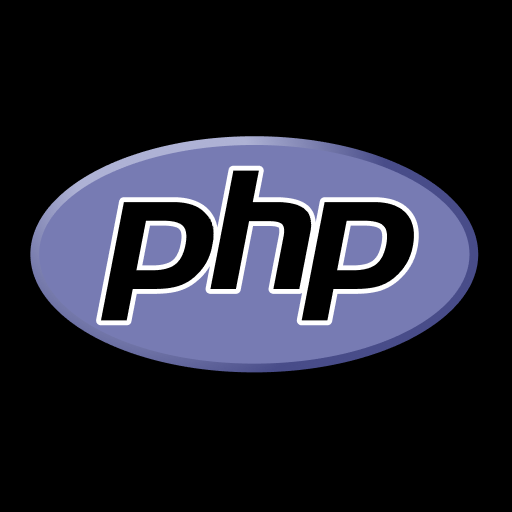PHP-PHP coding assistant.
AI-powered PHP coding assistant.
Help me write code in PHP
Fix this PHP error:
Explain PHP sessions
Show me an example of PHP object-oriented programming
Related Tools
Load More
PHP Engineer
An expert PHP engineer to help you solve and debug problems together.

PHP
⭐️ 4.3ㆍHighly sophisticated PHP + Laravel assistant and project generator with a focus on responsive, efficient, and scalable code. Write clean code and become a much faster developer.

Advanced PHP Assistant
A friendly PHP programming assistant, ready to assist you.

PHP Mentor
Elevate your PHP programming with AI-guided support. Need expert insights, bug resolutions, code optimizations, or upgrades? PHP Mentor delivers custom assistance for developers across all expertise levels, making coding simpler.

Cody - PHP
Cody its a partner for backends developers in PHP and Laravel its a part of other gpts called cody - english, cody - and cody social

Lara PHP
Advanced PHP and Laravel IT professional.
20.0 / 5 (200 votes)
Introduction to PHP
PHP, which stands for 'Hypertext Preprocessor,' is a widely-used open-source scripting language particularly suited for web development and can be embedded into HTML. Its primary design purpose is to enable the creation of dynamic and interactive web pages quickly and easily. PHP is executed on the server, which means that the client receives the output (HTML, JSON, etc.) rather than the code itself. This enhances security by hiding the backend logic from the user. PHP integrates seamlessly with various databases, such as MySQL, PostgreSQL, and SQLite, making it a versatile tool for web applications.

Main Functions of PHP
Server-Side Scripting
Example
Handling form submissions, user authentication, and managing sessions.
Scenario
An e-commerce site uses PHP to process customer orders. When a user submits an order form, PHP validates the input, stores the order details in a database, and sends a confirmation email.
Database Interaction
Example
Executing SQL queries to fetch, insert, update, and delete data from databases.
Scenario
A blogging platform uses PHP to retrieve and display blog posts from a MySQL database. Users can add, edit, and delete posts through a PHP-based administration panel.
Content Management Systems (CMS)
Example
Powering popular CMSs like WordPress, Joomla, and Drupal.
Scenario
A company website is built using WordPress. PHP manages the backend operations, including theme rendering, plugin functionality, and content storage, allowing non-technical users to manage the site easily.
Ideal Users of PHP
Web Developers
PHP is ideal for web developers who need to create dynamic, data-driven websites. Its ease of integration with HTML and databases, along with a vast array of frameworks and libraries, makes it a powerful tool for developing everything from small personal websites to large-scale enterprise applications.
Small to Medium-Sized Enterprises (SMEs)
SMEs benefit from PHP's cost-effectiveness and the large number of available open-source solutions. PHP allows these businesses to build robust web applications without incurring high development costs. CMS platforms like WordPress and Joomla enable SMEs to maintain their websites with minimal technical expertise.

Guidelines for Using PHP
1
Visit aichatonline.org for a free trial without login, also no need for ChatGPT Plus.
2
Set up a local development environment by installing a web server (like Apache or Nginx) and PHP. Tools like XAMPP or WampServer can simplify this process.
3
Create a PHP file by using a text editor or IDE (such as VS Code, PhpStorm, or Sublime Text) and write your PHP code within <?php and ?> tags.
4
Run your PHP script by placing the PHP file in your web server's root directory and accessing it via a web browser, using a URL like http://localhost/yourfile.php.
5
Debug and test your PHP applications using built-in PHP functions and debugging tools to ensure your code runs as expected.
Try other advanced and practical GPTs
CPA Companion
AI-powered expertise for tax professionals

Title, Description and Tag Creator for Stock Photo
AI-powered titles, descriptions, and tags for your stock photos.

The Three Doors
Unlock adventures with AI-powered puzzles.

Worksheet Wizard
AI-powered worksheet creation for educators

CS AI SEO Topic Map GPT
AI-Powered Topic Maps for Content Creation

E-commerce Image Genius
AI-driven product descriptions from images

ロSora Prompt Master
AI-Powered Creativity for All

CS Professor
Empowering Learning with AI Intelligence

India
AI-powered content and information tool
Chromium开发导师
AI-powered Guide for Chromium on Windows

财税智库copilot
AI-powered financial insights.

GRAPHIC DESIGN
AI-driven design for everyone

- Automation
- Web Development
- API Integration
- Scripting
- Database Interaction
PHP Q&A
What is PHP used for?
PHP is a server-side scripting language designed for web development. It is used to create dynamic web pages, manage server-side tasks, and interact with databases.
How do I connect PHP to a database?
You can connect PHP to a database using extensions like MySQLi or PDO. These provide functions and methods to execute SQL queries and manage database interactions securely.
What are some common PHP frameworks?
Popular PHP frameworks include Laravel, Symfony, CodeIgniter, and Zend Framework. These frameworks streamline development by providing reusable code and libraries.
How can I secure my PHP applications?
To secure PHP applications, use prepared statements for database queries, validate and sanitize user input, implement proper error handling, and keep your PHP version up-to-date.
What are PHP data types?
PHP supports several data types, including integers, floats, strings, arrays, objects, NULL, and resources. Each type is used for different kinds of data and operations.